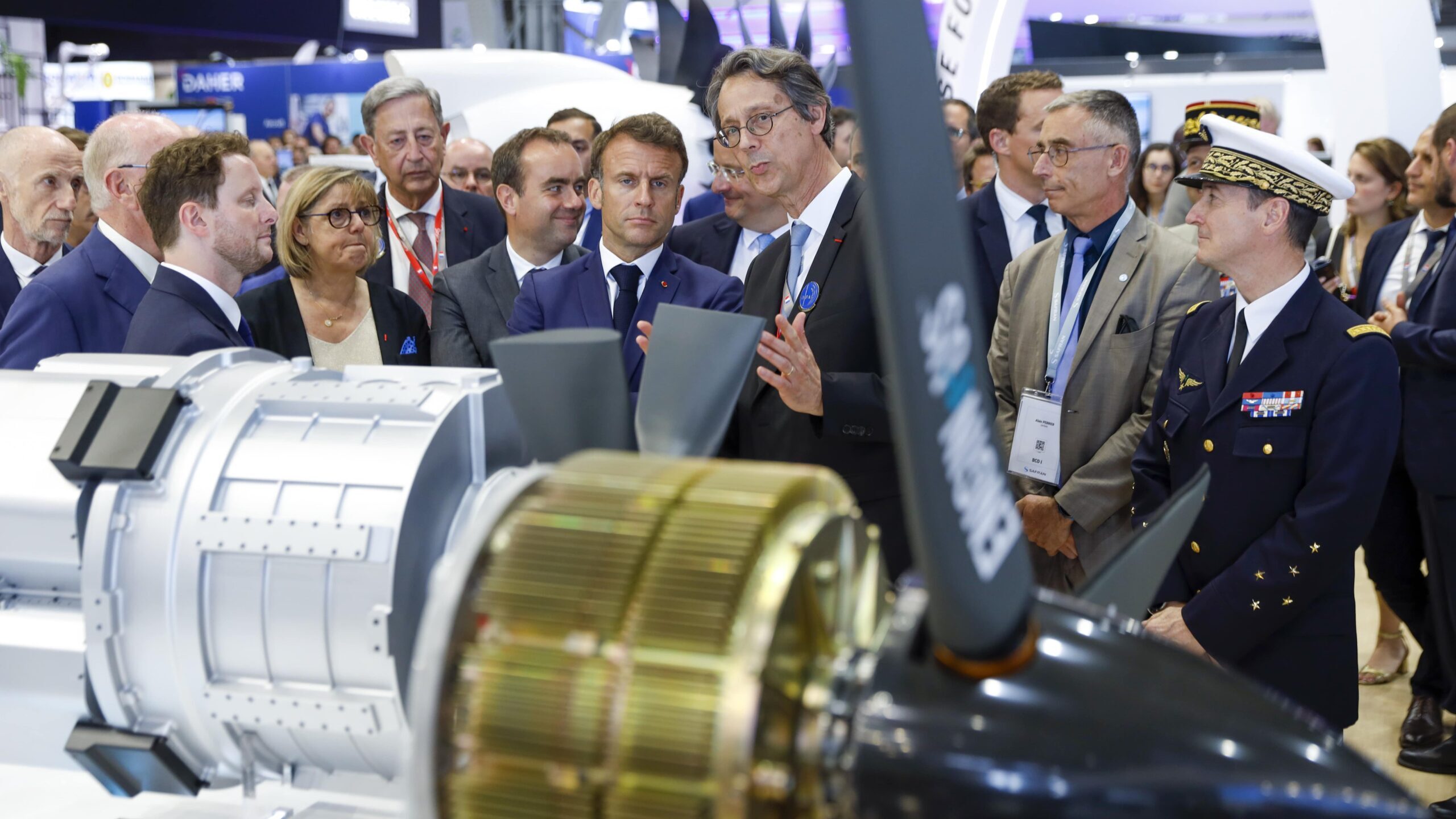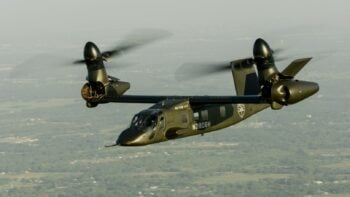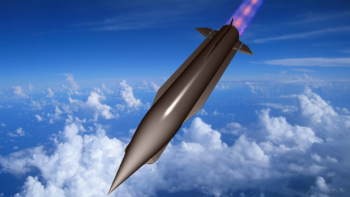
French President Emmanuel Macron visits the Safran trade show display at the Paris Air Show (Safran on Twitter)
PARIS AIR SHOW — France’s Safran and Germany’s MTU Aero Engines have agreed on a 50/50 joint venture to develop a future engine for the European Union’s Next Generation Rotorcraft Technologies (ENGRT) program.
Announced at the Paris Air Show, the two manufacturers noted the move falls under a Memorandum of Understanding and stressed they would focus on “advanced design maturity and affordable operating and maintenance costs” to deliver the new powerplant for entry to service in 2040.
FULL COVERAGE: Paris Air Show 2023
An initial technology development phase has been slated for 2025 to 2029, ahead of full engine development from 2030 onward.
“Developing this next-generation engine demands efficient project management and quick and flexible decisionmaking,” said Safran in a company statement. “MTU Aero Engines and Safran Helicopter Engines have therefore forged a strong alliance that will form the core of an extended European partnership involving industrial partners from several other European nations.”
Design of the engine will include “breakthrough technologies” including hybrid-electric propulsion, according to Cedric Goubet, CEO of Safran Helicopter Engines.
Funded by the European Defense Fund (EDF) and coordinated by Airbus Helicopters, ENGRT was originally launched at an industrial level by the manufacturer in January 2023, following a contract with the European Commission in December 2022.
A meeting of European rotary suppliers and related fields was also convened in Paris this week by Safran and MTU for those interested in joining the joint venture. The event drew “more than” 25 groups from industry and academia from 14 countries, according to MTU.
Once assembled, this team will aim “for a high-performance all-European engine to provide a perfect solution to power the future European military helicopter,” added the manufacturer.
“The first step in terms of engineering is to have a technology [development] phase from 2025 to 2029,” a MTU spokesperson told Breaking Defense. “After that, if the technology is validated and ready there could be a real engine development phase beginning in 2030.”
It will not be the first time Safran and MTU have worked together. The two are already involved in a ENGRT working group alongside Rolls Royce Germany, Italy’s Avio Aero and Spain’s ITP Aero, and are also teamed together on developing a New Generation Fighter (NGF) powerplant for the Franco-German-Spanish Future Combat Air System (FCAS) sixth generation effort.
“Having formed this partnership on FCAS, we decided it would be very useful to put the same structure together based around design of a potential helicopter engine,” added the MTU spokesperson.
RELATED: FCAS? SCAF? Tempest? Explaining Europe’s sixth-generation fighter efforts
Safran, MTU and Rolls Royce previously developed the MTR390 engine for the European Tiger support and anti-tank helicopter.
The German manufacturer also contributes to the production of General Electric’s T408 powerplant for the US Marine Corps in development CH-53K heavy lift helicopter.






















